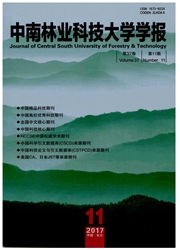

 中文摘要:
中文摘要:
外来植物入侵是全球性问题,严重威胁入侵地生态系统功能和稳定性。入侵植物与其在原产地生长特征的不同,使其在抵抗胁迫生境和利用资源方面具有较强的竞争能力,从而具有较高的入侵潜力。UV-B辐射增强和氮沉降加剧作为两种全球变化因子,可能与土壤微生物共同作用于植物入侵的整个过程。了解UV-B辐射增强和氮沉降加剧是如何直接或间接影响微生物介导的植物生长,有助于揭示全球变化背景下的植物入侵机理,为有效控制植物入侵并降低其对生态系统功能的危害提供理论依据。该试验采用四因素裂区设计,以入侵美国的中国乌桕(Triadica sebifera)为研究对象,通过模拟UV-B辐射增强和氮沉降加剧,在土壤微生物控制条件下,研究三者对不同种群乌桕生长的影响。结果显示:UV-B辐射增强、氮沉降加剧和土壤微生物可能共同作用于乌桕成功入侵的整个过程。UV-B辐射增强导致乌桕形态学和生物量分配发生变化,大部分的资源分配给叶片以抵抗外界UV-B辐射胁迫。氮沉降使得乌桕将更多资源分配至地上部分,特别是叶片,减少了对地下生物量的分配。原产地土壤微生物对乌桕生长具有显著正效应,同时,氮沉降增强了该效应而UV-B辐射增强对该效应没有影响。氮沉降没有减缓UV-B辐射对乌桕的胁迫作用。入侵地乌桕种群相比于原产地乌桕种群在株高、叶生物量和总生物量方面已经进化出了较为明显的优势,此外,入侵地乌桕种群相比于原产地乌桕种群减弱了在根冠比和根生物量方面对原产地土壤微生物的依赖性,但是增强了在叶面积比方面的依赖性。
 英文摘要:
英文摘要:
Aims Exotic plant invasions are important components of global change, threatening both the stability and func- tion of invaded ecosystems. Shifts in competitive ability of invasive plants versus their native congeners have been documented. Enhanced UV-B radiation and nitrogen (N) deposition might interact with soil biota communi- ties impacting the invasion process of exotic plant species. To understand the potential effects by UV-B and N with soil biota on plant growth would enhance our understanding of the mechanisms in plant invasions in the context of global change. Methods We conducted a full-factorial pot experiment in the native range (China) of Triadica sebifera invading US to investigate how UV-B radiation, N and soil biota together determined their seedling growth. Important findings The results showed that UV-B radiation, N and soil sterilization together impacted the growth of T. sebifera seedlings. UV-B radiation induced changes in biomass allocation with larger leaf biomass observed in response to UV-B radiation. In addition, N increased aboveground biomass and decreased root bio- mass simultaneously. Soil biota imposed positive effects on growth of T. sebifera, and the addition of N amplified these positive effects. The negative effects by UV-B radiation on growth of T. sebifera showed no response to N addition. Plant height, leaf biomass and total biomass of the invasive T. sebifera populations out- performed those of the native ones. In addition, invasive T. sebifera populations weakened the dependence of root/shoot ratio and root biomass on local soil microorganisms than native populations, but enhanced that of leaf area ratio.
 同期刊论文项目
同期刊论文项目
 同项目期刊论文
同项目期刊论文
 期刊信息
期刊信息
